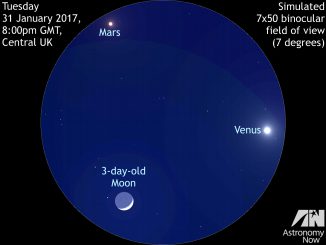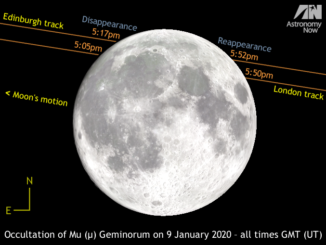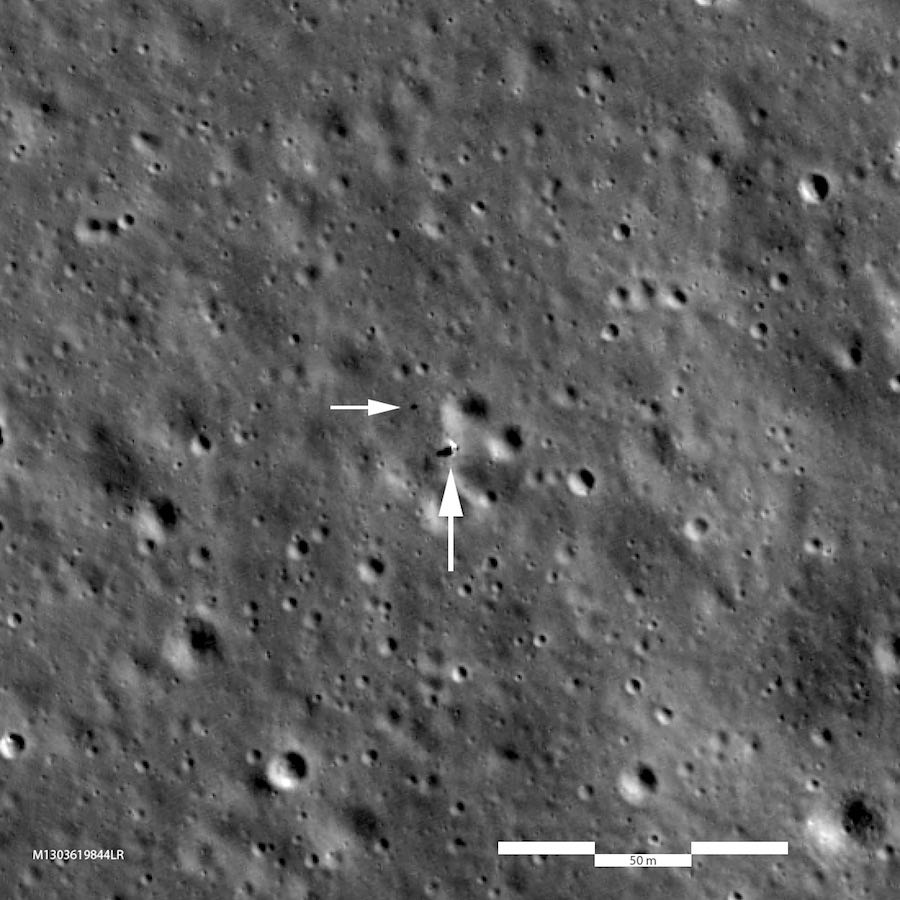
NASA’s Lunar Reconnaissance Orbiter has spotted China’s Chang’e 4 lander and rover on the far side of the Moon in new images, as the Chinese robots explore the floor of Von Kármán crater.
LRO took a series of photos of Chang’e 4 from different viewing angles, and the most detailed view was captured Feb. 1 as the orbiter sailed overhead at an altitude of around 51 miles (82 kilometers), according to an update written by Mark Robinson, principal investigator for the Lunar Reconnaissance Orbiter Camera, or LROC, at Arizona State University.
Chang’e 4 landed on the Moon Jan. 3, braking to a soft touchdown on the floor of Von Kármán crater, a 110-mile-wide (180-kilometre) crater in the southern hemisphere on the far side of the Moon. The Chinese lander became the first spacecraft to achieve a controlled landing on the lunar far side, which never faces Earth.
A dedicated communications satellite launched by China last year relays signals between Earth and Chang’e 4.
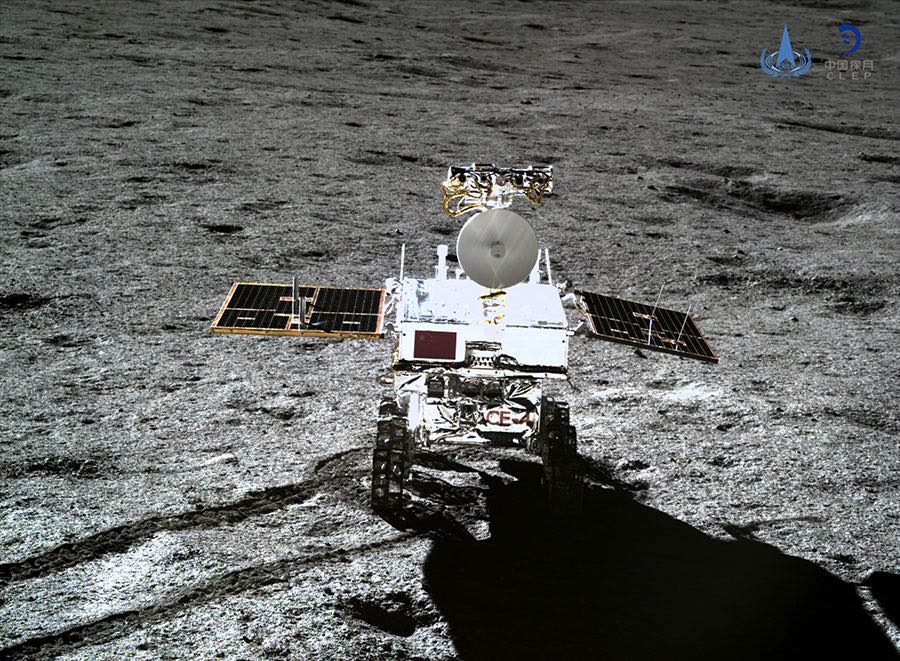
The Chang’e 4 mission includes a stationary lander and mobile rover, each carrying cameras and scientific instruments. The two vehicles were built as spares for China’s Chang’e 3 mission, which was the first Chinese lunar lander, touching down on the near side of the Moon in December 2013.
Chinese officials repurposed Chang’e 4 with new scientific instruments and sent it to the far side of the Moon.
In the Feb. 1 image from LRO, the Yutu 2 rover is visible around 95 feet (29 meters) from the Chang’e 4 lander.
A previous LRO image captured Jan. 30 showed the Chang’e 4 lander from a more oblique view, providing spectacular context on the craft’s location in Von Kármán crater, itself marked with numerous smaller craters created by subsequent asteroid impacts.
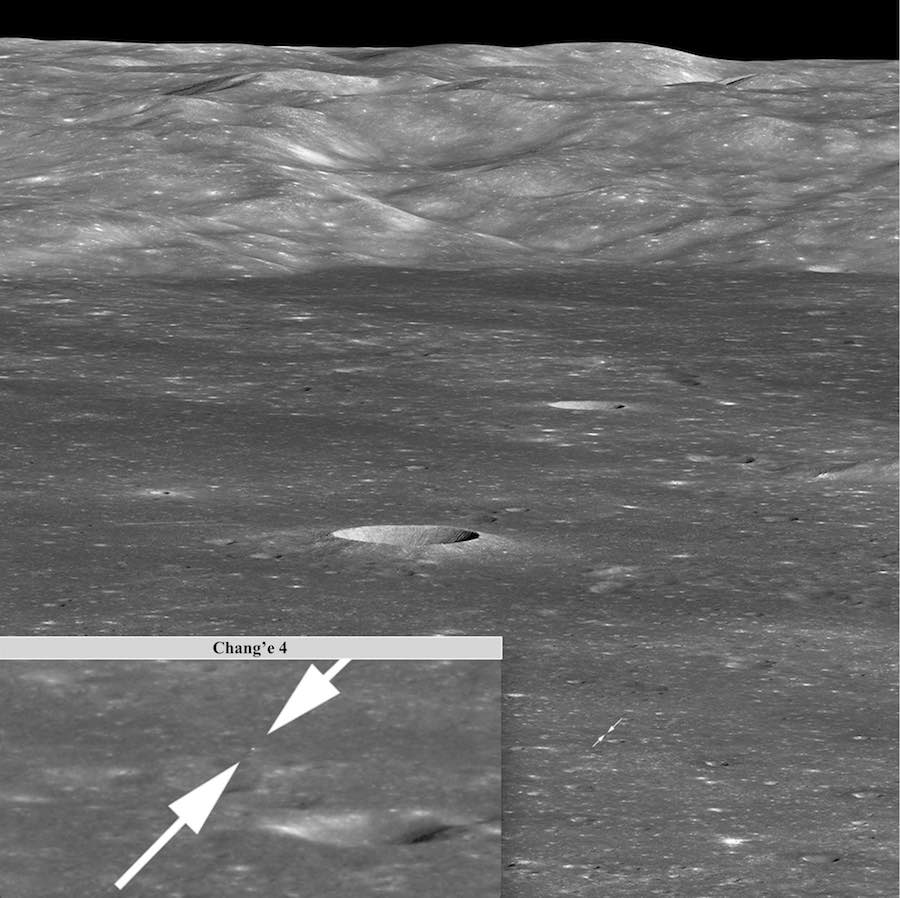
The far side of the mMon has a much different appearance than the side facing Earth. The far side has more craters and is more rugged, and Chang’e 4 is exploring a site in Von Kármán crater that was filled with basaltic lava excavated from a nearby crater.
“Chang’e 4 will collect compositional measurements of these far side basaltic rocks, and lunar scientists are anxiously awaiting these results. Do volcanic rocks on the far side differ from the basalts collected from the near side? We will have to wait and see!” Robinson wrote in a Feb. 8 blog post.
“According to CNSA (the China National Space Administration), Chang’e 4 instrumentation includes the visible near infrared spectrometer (VNIS) which takes measurements that can be used to address this question,” Robinson wrote. “This new information from the surface will provide important ground truth, while the combination of on-surface and orbital measurements provides synergy that will advance knowledge of the far side.”
Approaching its 10th anniversary in lunar orbit, LRO has surveyed the Moon’s landscapes and searched for evidence of water ice, finding signs of cold pockets where frost might be present near the lunar south pole. Throughout its mission, LRO’s high-resolution mapping camera has snapped pictures of the Apollo lunar landing sites, and spotted China’s Chang’e 3 and Chang’e 4 robotic probes on the surface after their landings.
Chang’e 4’s Yutu 2 rover has accumulated nearly 400 feet (120 metres) of driving, eclipsing the movement accomplished by Chang’e 3’s rover in late 2013 and early 2014 before it lost mobility. Chinese officials said the rover and lander went into hibernation Feb. 11 for the mission’s second lunar night since landing, with wakeup planned Feb. 28 and March 1, respectively, to resume their scientific observations.
Email the author.
Follow Stephen Clark on Twitter: @StephenClark1.


